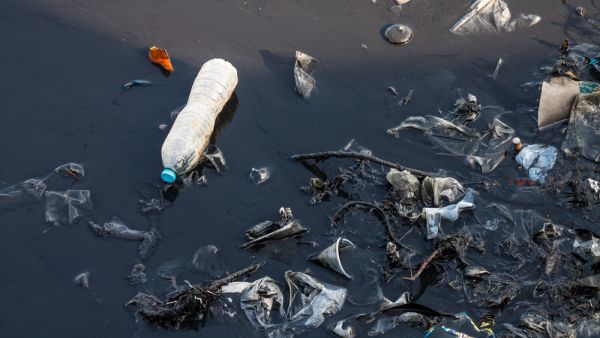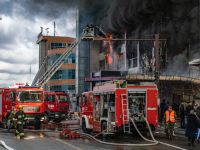With warm weather expected to grace Lebanon in the coming days, locals and tourists are once again asking: Is it safe to swim in Lebanon’s sea, or is it too polluted? Marine expert Milad Fakhri says there’s very little to fear.“It’s important that inaccurate information that scares people doesn’t spread because there’s nothing scary. We would be the first people to say there’s a problem, but there is no problem,” said Fakhri, director of the National Center for Marine Sciences at the National Council for Scientific Research, or CNRS.
A 2018 CNRS report showed only four of the 25 areas in Lebanon surveyed for bacterial pollution were described as very contaminated and not fit for swimming in a detailed 30-page report on coastal pollution. A further five were deemed average and 16 good.
“There are certain areas of course that are polluted due to things like wastewater, but it’s mostly clean,” Fakhri said.
Those areas are Dora, Antelias, Ramlet al-Baida and Manara.
The 2019 CNRS report is not yet complete, but Fakhri said he didn’t expect the results to be much different from last year. In fact, he said some areas might improve.
“There might even be some improvements in Sidon because it has a wastewater treatment plant that has been functioning over five years. So over time it has lowered the level of pollution,” Fakhri said.
At the American University of Beirut’s beach on the Corniche, young boys kicked around a football ball while men sunbathed and swam. “I’ve been swimming for 40 years, there’s no pollution. It’s all lies. The sea churns and cleans itself,” Abu Khodor said. “I come to the [AUB beach] daily. I also know what they say scientifically, but we also know how the sea works.
“We know where the locations are for raw sewage, and every day we see the direction of the wind and what direction the water is coming from. ... It just depends on the day,” said 59-year-old Munir al-Khawleh.
But many believe Lebanon’s sea is far too polluted. “I would swim although it is very polluted. I swam in Sidon but it was very dirty and on the seaside there is a lot of littering and garbage floating around,” said Tom from Austria, who was visiting Beirut for a week. He and several others declined to provide their last names for this story.
“I definitely wouldn’t swim in Beirut. I don’t know what’s in the water; I just know it’s very polluted. ... You hear a lot of stuff about what goes into the water, the sewage and how it gets dumped into the sea, and the trash disposal area is right next the sea a couple of kilometers away,” said 18-year-old Leena, who is Swiss-Lebanese.
{"preview_thumbnail":"https://cdn.flowplayer.com/6684a05f-6468-4ecd-87d5-a748773282a3/i/v-i-f…","video_id":"ff547f24-5092-4e54-88a3-dc12ddeddf9d","player_id":"8ca46225-42a2-4245-9c20-7850ae937431","provider":"flowplayer","video":"Death Toll in Sri Lanka's Deadly Attacks up to 290"}
Some said they had fallen ill after swimming in the water. “Last year, I barely went in for five minutes and I got a rash. There’s so much pollution,” Ayat from Palestine said.
“I’d go swimming in the south where the water is clean. In Beirut, feces go into the water. I once swam here and I got sick,” 18-year-old Nadine said.
Joslin Kehdy, founder and president of Recycle Lebanon, said that on average, 50 kilograms of waste was collected during her organization’s weekly to monthly coastal cleanups across Lebanon in locations including Beirut, Batroun, Tyre and Jbeil. “For me, the question is not ‘Is the sea polluted?’ It is polluted. It’s a matter of how fast do we close the tap,” Kehdy said.
Nadim Farajalla, director of the climate change and environment program the American University of Beirut’s Issam Fares Institute, said that for now, it was difficult to tell how safe it was to swim.
“There is no continuous monitoring or sampling of pollution of the sea along the coast. There are samples that have been taken, on which people have made claims. This might not necessarily reflect reality. It might show high or low pollution because what you’re taking is a graph sample, it’s like you’re taking a quick photograph,” Farajalla said. “It’s quite a dynamic system and you cannot make sweeping statements on it.” He suggested that authorities ought to invest in regular sea pollution monitoring. “Would it not be better to have numbers to combat allegations and have maps to highlight polluted hot spots?”
This, he said, might give communities hoping to attract tourists an incentive to clean up their act.
Tourism Minister Avedis Guidanian declined to comment for this story, but last year played down reports of pollution. In an interview with The Daily Star, he conceded that some parts of the sea were polluted, but blamed media reports for exaggerating the situation and damaging the country’s image.
Environment Minister Fadi Jreissati was unable to be reached for comment before publication.
This article has been adapted from its original source.








